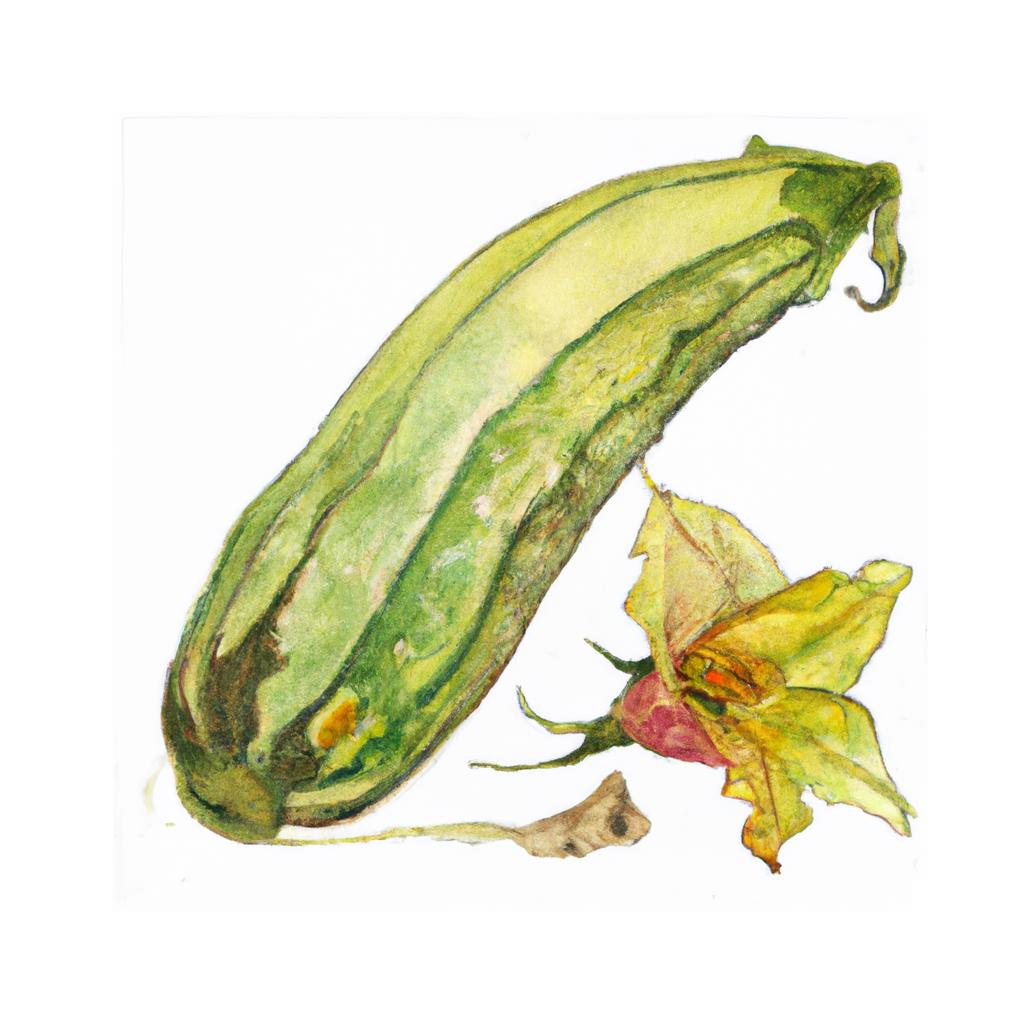
Courgette, also known as zucchini, is a summer squash that belongs to the Cucurbitaceae family, which also includes cucumbers, melons, and pumpkins. It originated in Central America, but has become widely popular around the world, particularly in Europe and North America. Courgette plants come in both bush and vining varieties, making them suitable for different garden layouts and sizes.
The courgette typically has a green skin, but there are also yellow-skinned varieties. They are usually harvested when 6 to 8 inches (15-20 cm) long, but can grow up to 12 inches (30 cm) in length. The flavor of young courgettes is light and slightly nutty. As they mature, their flesh becomes more bitter and fibrous.
Fascinatingly, courgettes produce both male and female flowers on the same plant. Known for their vibrant yellow hue, the flowers are not only visually appealing, but also edible. They can be stuffed with various fillings, battered and fried, or used as an ingredient in salads and other dishes.
Courgettes are very versatile in cooking and can be prepared in a variety of ways. They are commonly used in stir-fries, salads, and casseroles, or as a substitute for pasta. Grilled or roasted courgettes pair well with Mediterranean flavors such as olive oil, tomatoes, and fresh herbs. They can also be spiralized into 'zoodles' (zucchini noodles) as a low-carb alternative to traditional pasta.
Not only do courgettes taste great, but they also have numerous health benefits due to their high water content and low calorie count. They provide a good source of vitamins A and C, as well as potassium and dietary fiber. Incorporating courgettes into your diet can contribute to healthy digestion, overall hydration, and improved eye health.
This is advice is most applicable to growers in the UK, you may need to adjust the timings if you live somewhere with a different climate and/or seasons.
| Month | Tasks | Advice |
|---|---|---|
| January | - | - |
| February | sow indoors, | Sow courgette seeds indoors in pots or seed trays, keep them in a warm and bright place. |
| March | sow indoors, harden off, | Continue sowing indoors and start hardening off young plants towards the end of the month. |
| April | plant out, | Plant out hardened off courgette plants in their final growing positions, ensuring enough space between them. |
| May | plant out, water regularly, | Plant out any remaining courgette plants and ensure they receive regular watering to avoid dryness. |
| June | harvest, water regularly, | Start harvesting courgettes when they reach about 10-15cm long, and water regularly to encourage growth. |
| July | harvest, water regularly, | Continue to harvest courgettes regularly and water consistently to promote even fruit development. |
| August | harvest, water regularly, | Harvest courgettes consistently and water sufficiently to maintain steady growth. |
| September | harvest, | Continue harvesting any remaining courgettes, as the plants will likely slow down in production. |
| October | - | - |
| November | - | - |
| December | - | - |